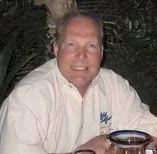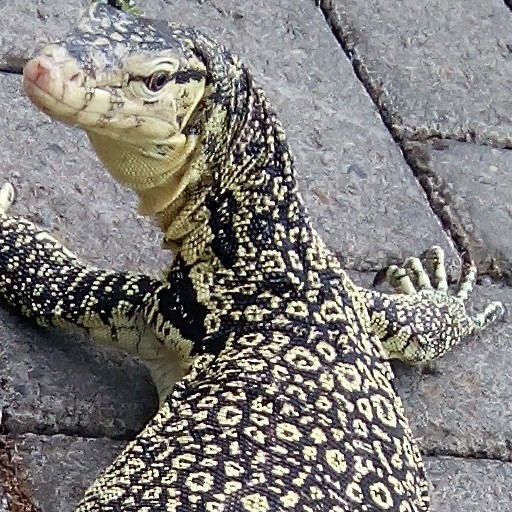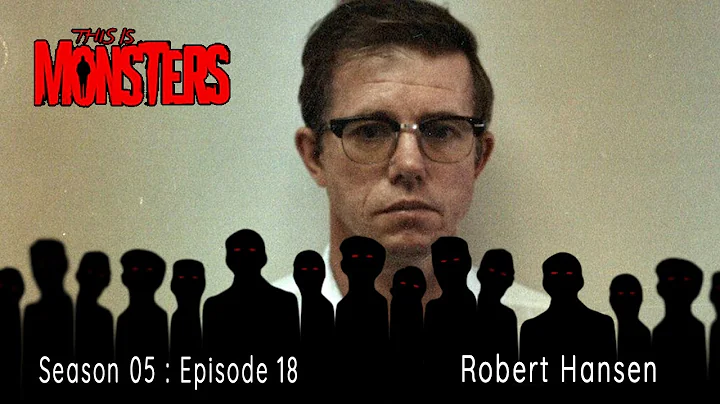Ronald W Hansen
age ~62
from Lafayette, CA
- Also known as:
-
- Ronald Wayne Hansen
- Ronald Te Hansen
- Ronald Lynda Hansen
- Ronald H Hansen
- Ronald L Hansen
- Ron W Hansen
- Ron L Hansen
- Ron Hanson
Ronald Hansen Phones & Addresses
- Lafayette, CA
- Walnut Creek, CA
- San Ramon, CA
- Oakland, CA
Isbn (Books And Publications)


License Records
Ronald E Hansen
License #:
381250-B100 - Expired
Category:
Contractor
Type:
B100 - General Building Qualifier
Ronald C Hansen
License #:
6272 - Expired
Category:
Asbestos
Issued Date:
Apr 22, 2004
Effective Date:
May 2, 2005
Expiration Date:
Apr 22, 2005
Type:
Asbestos Supervisor
Ronald C Hansen
License #:
5339 - Expired
Category:
Asbestos
Issued Date:
Apr 23, 1998
Effective Date:
Jul 26, 2004
Expiration Date:
Apr 23, 2002
Type:
Asbestos Worker
Ronald C Hansen
License #:
6231 - Expired
Category:
Asbestos
Issued Date:
Apr 25, 2002
Effective Date:
May 5, 2004
Expiration Date:
Apr 25, 2004
Type:
Asbestos Worker
Name / Title
Company / Classification
Phones & Addresses
General Manager
Downtown Auto Park
Parking Facilities
Parking Facilities
150 S 5th St, Ste 1425, Minneapolis, MN 55402-5335
(612)3300428, (612)3395668
(612)3300428, (612)3395668
President
Sunlight Readables, Inc
2096 Walsh Ave, Santa Clara, CA 95050
1400 Coleman Ave, Santa Clara, CA 95050
1400 Coleman Ave, Santa Clara, CA 95050
President
DRC ASSOCIATES, INC
Appraisal of Businesses & Securities
Appraisal of Businesses & Securities
2469 Proterfield Ct, Mountain View, CA 94040
2469 Porterfield Ct, Mountain View, CA 94040
(408)2534740
2469 Porterfield Ct, Mountain View, CA 94040
(408)2534740
Rlh Engineering, LLC
Servicing 4 Homes With Water · Engineering Services · Engineering Services, Nsk
Servicing 4 Homes With Water · Engineering Services · Engineering Services, Nsk
10941 Miguelita Rd, San Jose, CA 95127
NESNAH ENTERPRISES, INC
ECOEREK, INC
Principal *
Hansens Towing
Automotive Services
Automotive Services
Us Patents
-
System And Method For Improving Emitter Life In Flat Panel Field Emission Displays
view source -
US Patent:6369784, Apr 9, 2002
-
Filed:Sep 23, 1999
-
Appl. No.:09/405281
-
Inventors:Igor L. Maslennikov - Sunnyvale CA
Dennis M. Urbon - San Jose CA
Christopher J. Spindt - Menlo Park CA
Ronald L. Hansen - San Jose CA
Christopher J. Curtin - Los Altos Hills CA -
Assignee:Candescent Intellectual Property Services, Inc. - San Jose CA
-
International Classification:G09G 300
-
US Classification:345 752, 345 741, 345204, 345208, 313339, 713321
-
Abstract:A field emission display having an improved operational life. In one embodiment of the present invention, the field emission display comprises a plurality of row lines, a plurality of column lines, and a plurality of electron emissive elements disposed at intersections of the plurality of row lines and column lines, a column driver circuit, and a row driver circuit. The column driver circuit is coupled to drive column voltage signals over the plurality of column lines; and, the row driver circuit is coupled to activate and deactivate the plurality of row lines with row voltage signals. Significantly, according to the present invention, operational life of the field emission display is substantially extended when the electron emissive elements are intermittently reverse-biased by the column voltage signals and the row voltage signals. In another embodiment, the row driver circuit is responsive to a SLEEP signal. The row driver circuit, upon receiving the SLEEP signal, drives a sleep-mode voltage over the row lines to reverse-bias the electron emissive elements.
-
System And Method For Improving Emitter Life In Flat Panel Field Emission Displays
view source -
US Patent:6448949, Sep 10, 2002
-
Filed:Jun 5, 2000
-
Appl. No.:09/588267
-
Inventors:Igor L. Maslennikov - Sunnyvale CA
Dennis M. Urbon - San Jose CA
Christopher J. Spindt - Menlo Park CA
Ronald L. Hansen - San Jose CA
Christopher J. Curtin - Los Altos Hills CA -
Assignee:Candescent Technologies Corporation - San Jose CA
-
International Classification:G09G 300
-
US Classification:345 74, 345 75, 345208, 3151691
-
Abstract:A field emission display having an improved operational life. In one embodiment of the present invention, the field emission display comprises a plurality of row lines, a plurality of column lines, and a plurality of electron emissive elements disposed at intersections of the plurality of row lines and column lines, a column driver circuit, and a row driver circuit. The column driver circuit is coupled to drive column voltage signals over the plurality of column lines; and, the row driver circuit is coupled to activate and deactivate the plurality of row lines with row voltage signals. Significantly, according to the present invention, operational life of the field emission display is substantially extended when the electron emissive elements are intermittently reverse-biased by the column voltage signals and the row voltage signals. In another embodiment, the row driver circuit is responsive to a SLEEP signal. The row driver circuit, upon receiving the SLEEP signal, drives a sleep-mode voltage over the row lines to reverse-bias the electron emissive elements.
-
Auxiliary Chamber And Display Device With Improved Contaminant Removal
view source -
US Patent:6541912, Apr 1, 2003
-
Filed:Jul 26, 1999
-
Appl. No.:09/361334
-
Inventors:William C. Fritz - Menlo Park CA
Igor L. Maslennikov - Sunnyvale CA
Theodore S. Fahlen - San Jose CA
George B. Hopple - Palo Alto CA
Christopher J. Curtin - San Jose CA
Colin D. Stanners - San Jose CA
Petre H. Vatahov - San Jose CA
Christopher J. Spindt - Menlo Park CA
Ronald L. Hansen - San Jose CA -
Assignee:Candescent Technologies Corporation - San Jose CA
-
International Classification:H01J 1724
-
US Classification:313553, 313495, 313422, 417 48, 417 51
-
Abstract:An apparatus for removing contaminants from a display device is disclosed. In one embodiment, an auxiliary chamber is adapted to be coupled to a surface of a display device such that contaminants within the display device can travel from the display device into the auxiliary chamber. A getter is disposed in the auxiliary chamber. The getter is adapted to capture the contaminants once the contaminants travel from the display device into the auxiliary chamber. In other embodiments, the getter is disposed in the border region surrounding the active area of the display.
-
Apparatus For Removing Contaminants From A Display Device
view source -
US Patent:6853135, Feb 8, 2005
-
Filed:May 20, 2002
-
Appl. No.:10/152589
-
Inventors:William C. Fritz - Menlo Park CA, US
Igor L. Maslennikov - Sunnyvale CA, US
Theodore S. Fahlen - San Jose CA, US
George B. Hopple - Palo Alto CA, US
Christopher J. Curtin - San Jose CA, US
Colin D. Stanners - San Jose CA, US
Petre H. Vatahov - San Jose CA, US
Christopher J. Spindt - Menlo Park CA, US
Ronald L. Hansen - San Jose CA, US -
Assignee:Candescent Technologies Corporation - Los Gatos CA
Candescent Intellectual Property Services, Inc. - Los Gatos CA -
International Classification:H01J017/24
-
US Classification:313553, 313495, 313422, 417 48, 417 51
-
Abstract:An apparatus for removing contaminants from a display device is disclosed. In one embodiment, an auxiliary chamber is adapted to be coupled to a surface of a display device such that contaminants within the display device can travel from the display device into the auxiliary chamber. A getter is disposed in the auxiliary chamber. The getter is adapted to capture the contaminants once the contaminants travel from the display device into the auxiliary chamber. In other embodiments, the getter is disposed in the border region surrounding the active area of the display.
-
Mouse Pointer With Switchable Emulation Mode
view source -
US Patent:48599956, Aug 22, 1989
-
Filed:Jun 30, 1987
-
Appl. No.:7/068604
-
Inventors:Ronald D. Hansen - Fremont CA
Clayton W. Mock - Mountain View CA
Abdo G. Kadifa - Palo Alto CA -
Assignee:Xerox Corporation - Stamford CT
-
International Classification:G09G 302
-
US Classification:340710
-
Abstract:Mouse emulation includes two modes, a host mode in which the pointer behaves as the pointer of the host system and an emulating mode in which the pointer behaves as the pointer of the target system being emulated. The display of the target system appears in an emulation window within the host system display. The user can switch from host mode to emulating mode by clicking a mouse key when the pointer is located in the emulation window which also serves to make the emulation window the input focus for receiving user input signals from the keyboard. The user can switch from emulating mode to host mode by depressing a STOP key, a keystroke which need not be provided to the emulator because it would not be provided to the target system's CPU. Mouse related data is transferred to the emulator through a data structure in a reserved memory space which a mouse application does not access, such as the BIOS area if an IBM PC is being emulated. A mouse driver which provides standard responses to service requests from the application retrieves this data from the data structure, making hardware ports or software emulating or bypassing such ports unnecessary.
-
System And Method For Improving Emitter Life In Flat Panel Field Emission Displays
view source -
US Patent:61338931, Oct 17, 2000
-
Filed:Aug 31, 1998
-
Appl. No.:9/144213
-
Inventors:Igor L. Maslennikov - Sunnyvale CA
Dennis M. Urbon - San Jose CA
Christopher J. Spindt - Menlo Park CA
Ronald L. Hansen - San Jose CA
Christopher J. Curtin - Los Altos Hills CA -
Assignee:Candescent Technologies, Inc. - San Jose CA
-
International Classification:G09G 300
-
US Classification:345 74
-
Abstract:A field emission display having an improved operational life. In one embodiment of the present invention, the field emission display comprises a plurality of row lines, a plurality of column lines, and a plurality of electron emissive elements disposed at intersections of the plurality of row lines and column lines, a column driver circuit, and a row driver circuit. The column driver circuit is coupled to drive column voltage signals over the plurality of column lines; and, the row driver circuit is coupled to activate and deactivate the plurality of row lines with row voltage signals. Significantly, according to the present invention, operational life of the field emission display is substantially extended when the electron emissive elements are intermittently reverse-biased by the column voltage signals and the row voltage signals. In another embodiment, the row driver circuit is responsive to a SLEEP signal. The row driver circuit, upon receiving the SLEEP signal, drives a sleep-mode voltage over the row lines to reverse-bias the electron emissive elements.
Resumes

Senior Project Manager
view sourceWork:
The Morgan Contracting Corporation
Senior Project Manager
Senior Project Manager

Ronald Hansen
view source
Assistant General Manager
view sourceWork:
Assistant General Manager

Ronald Hansen
view source
Ronald Hansen
view source
Ronald Hansen
view source
Ronald Hansen
view sourceLawyers & Attorneys

Ronald Hansen - Lawyer
view sourceOffice:
Law Offices of Ronald Hansen
Specialties:
Probate
General Practice
Family Law
Wills
General Practice
Family Law
Wills
ISLN:
911923399
Admitted:
1994
University:
Florida International University, B.A., 1977
Law School:
St. Thomas University, J.D., 1994
Plaxo

Ronald Hansen
view source
Ronald Hansen
view sourceLouisville COPrincipal Software Engineer at enableTV Past: Sr. Software Engineer at Solekai Systems, Independent Contractor, Sr. Software Engineer...

ronald hansen
view sourceopes consulting engineers

Ronald Hansen
view sourcePremier Lake Homes LLC

Ronald Hansen
view source
Ronald Hansen
view source
Ronald Hansen
view source
Ronald Hansen
view source
Ronald Hansen Jr.
view source
Ronald Hansen
view source
Ronald Hansen
view source
Ronald Hansen
view sourceYoutube
Classmates

Ronald Hansen
view sourceSchools:
Bradford Academy Bradford VT 1963-1967
Community:
Margaret Winney, Wilfred Sweet, Brenda Erskine

Ronald Hansen
view sourceSchools:
Leroy-Ostrander High School Le Roy MN 1971-1975
Community:
Ralph Cortese, Eileen Larson

Ronald Hansen
view sourceSchools:
Harkins High School New Castle NB 1943-1955
Community:
Jean O'donnell, Lynn Crossett, James Murphy, Rita Poirier, David Horsman

Ronald Hansen
view sourceSchools:
Kennedy High School Bloomington MN 1983-1987
Community:
Connie Shelton, Rhonda Lofland, Sherry Gjevre, Shelley Koerner

Ronald Hansen
view sourceSchools:
Florence High School Florence WI 1984-1984
Community:
Star Theodore, Dorothy Morales

Ronald Hansen
view sourceSchools:
North Cache High School Richmond UT 1951-1955

Ronald Hansen
view sourceSchools:
Thompson Academy Boston MA 1959-1963
Community:
Bob Hammond, Marianne Prescott, Barry Gaugler, Robert Hildebrand, James Noone

Ronald Hansen
view sourceSchools:
Boston Technical High School Boston MA 1979-1983
News

Is there a Democratic wave building in this year's election? Key races will tell
view source- ; Ronald Hansen in Phoenix; Thomas Novelly in Louisville; Joseph Spector in Albany; Ali Schmitz in Tallahassee; Jason Noble in Des Moines; Robert King and Greg Weaver in Indianapolis; Maureen Groppe and Herb Jackson in the USA TODAYWashington bureau; Corinne Kennedy in Palm Springs; William Glauber
- Date: Feb 08, 2018
- Category: U.S.
- Source: Google
Myspace
Flickr
Googleplus

Ronald Hansen
Work:
Michaels - Senior VP (2008)

Ronald Hansen

Ronald Hansen

Ronald Hansen

Ronald Hansen

Ronald Hansen

Ronald Hansen

Ronald Hansen
Work:
Western University - Professor Emeritus
Tagline:
Human Ingenuity Group
Get Report for Ronald W Hansen from Lafayette, CA, age ~62













